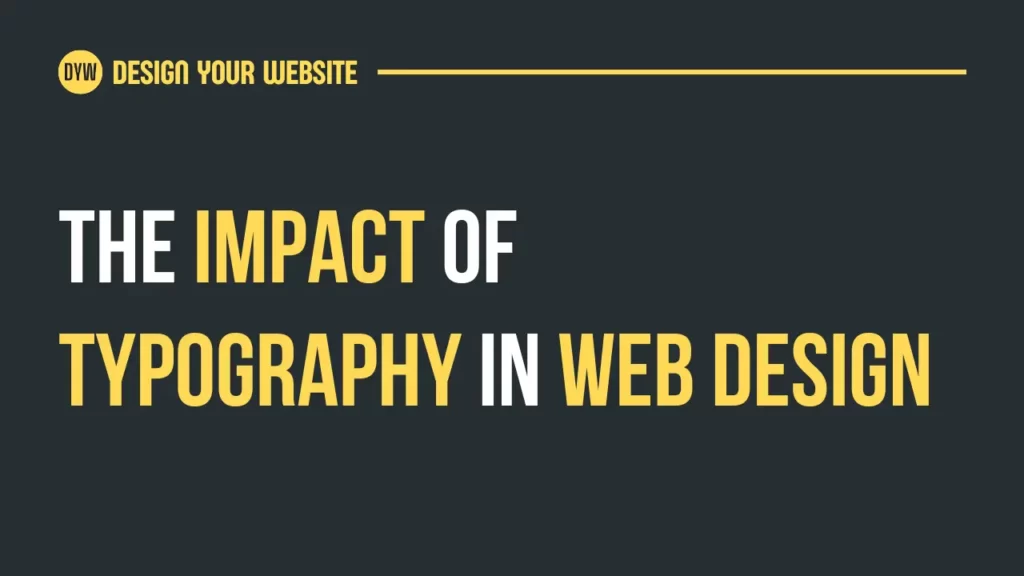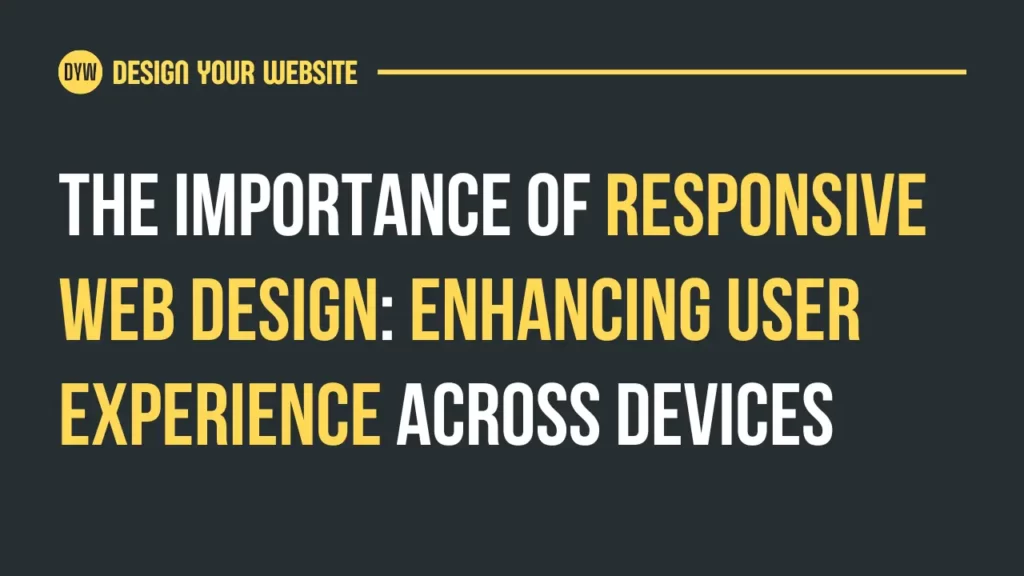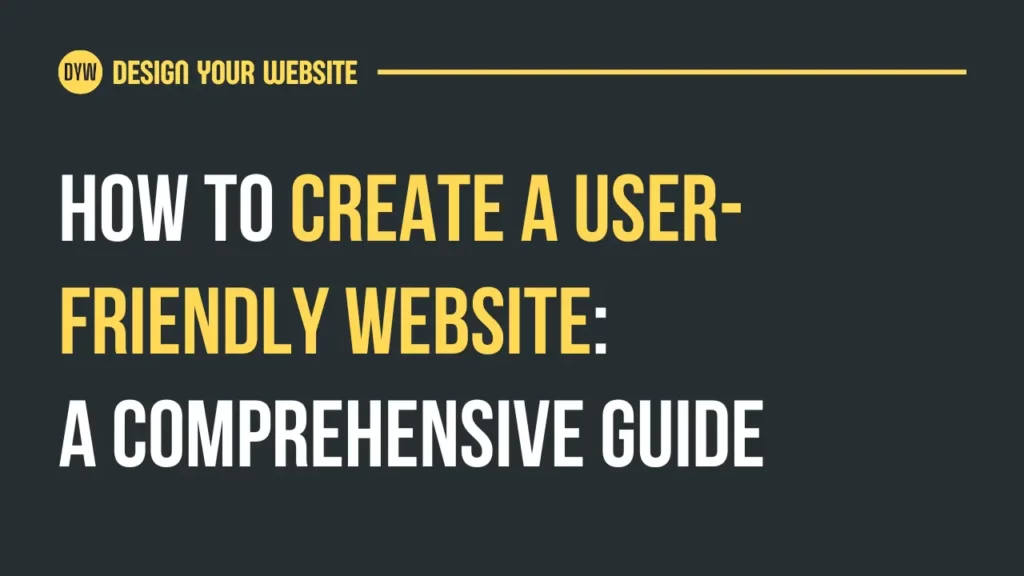Introduction: Unveiling the Impact of Typography in Web Design
Web design has evolved into a multidimensional realm where aesthetics, functionality, and user engagement harmoniously converge. Typography, often referred to as the “art of type,” plays a pivotal role in shaping the user experience and conveying a brand’s identity on digital platforms. In this article, we delve into “The Impact of Typography in Web Design” to understand how the choice of fonts, styles, and layouts influences the perception of a website, user interaction, and overall success.
The Role of Typography in User Experience
Typography serves as the bridge between the visual and textual aspects of a website. It establishes a visual hierarchy that guides users through the content with ease. By leveraging a combination of fonts, sizes, and spacing, designers can create a rhythm that guides readers from one piece of information to the next, ensuring a seamless and engaging user experience.
The Impact of Typography in Web Design goes beyond aesthetics. Legibility and readability are paramount to keeping visitors engaged and reducing bounce rates. Proper font choices can ensure that users effortlessly absorb the content, leading to increased time spent on the website. Sans-serif fonts are often favored for their clean and modern appearance, while serif fonts can evoke a sense of tradition and elegance.
Brand Identity and Typography: A Dynamic Duo
Typography plays a crucial role in expressing a brand’s identity and personality. Every font has a unique character that can align with different brand attributes. A tech-savvy company might opt for a sleek and futuristic font, while a boutique brand could choose an ornate typeface to reflect sophistication. The consistent use of typography across various touchpoints fosters brand recognition and strengthens the overall identity.
The Art of Pairing Fonts for Maximum Impact
Pairing fonts is an art that can elevate a website’s visual appeal. Combining contrasting typefaces, such as a bold headline font with a simple body text font, can create a harmonious balance and draw attention to key elements. However, the key is moderation – using too many fonts can lead to a cluttered and chaotic design. Striking the right balance is essential for a cohesive and visually pleasing layout.
Responsive Typography: Adapting Across Devices
In today’s mobile-driven landscape, responsive web design is essential. Typography should adapt seamlessly across various devices and screen sizes. Responsive typography involves adjusting font sizes and line spacing to ensure optimal legibility without sacrificing aesthetics. This approach guarantees a consistent and enjoyable reading experience for users, regardless of the device they are using.
The Psychology of Fonts: Impact on User Perception
Fonts carry intrinsic psychological associations that influence how users perceive content. For instance, a playful and whimsical font might not be suitable for a serious financial website. Understanding these associations is crucial when selecting fonts to align with the website’s purpose and message. LSI Keyword: Typeface Psychology in Web Design.
Accessibility Matters: Typography for All Users
Web design should prioritize accessibility, making the content available to users with diverse needs. Typography plays a vital role in this aspect. Choosing fonts with excellent legibility, providing sufficient contrast, and offering adjustable font sizes empower users with visual impairments to engage seamlessly with the content.
Frequently Asked Questions (FAQs):
Q: How does typography impact user engagement?
Typography directly influences how users navigate and interact with a website’s content. A well-designed typography hierarchy enhances readability, guides users through the information flow, and encourages them to stay longer on the site.
Q: What are some popular font pairings for web design?
A: Pairing fonts like “Montserrat” with “Lora” or “Roboto” with “Open Sans” can create visually appealing combinations that strike a balance between headlines and body text, enhancing overall readability and aesthetics.
Q: Can typography affect a website’s conversion rate?
A: Absolutely. Typography impacts the perception of trust, professionalism, and brand identity. A cohesive and well-chosen typography style can contribute to building user trust and boosting conversions.
Q: Is typography equally important for mobile and desktop design?
A: Yes, responsive typography is crucial for ensuring a consistent and enjoyable reading experience across various devices. Typography should adapt to different screen sizes without compromising legibility or design aesthetics.
Q: How can typography enhance brand recognition?
A: Consistent use of typography that aligns with a brand’s values and personality fosters brand recognition. When users encounter the same fonts across different platforms, they associate them with the brand’s identity.
Q: Are there any tools to help designers choose appropriate fonts?
A: Yes, there are various tools like Google Fonts, Adobe Fonts, and Typekit that offer a wide range of fonts with customization options. These tools make it easier for designers to find and pair fonts that suit their design goals.
Conclusion: Crafting Digital Experiences through Typography
“The Impact of Typography in Web Design” is a testament to the symbiotic relationship between aesthetics and functionality in the digital realm. Typography not only enhances user experience and engagement but also serves as a powerful tool for expressing brand identity and establishing credibility. As designers continue to push the boundaries of web design, the art of typography remains an essential pillar, shaping the way we perceive and interact with digital content.




